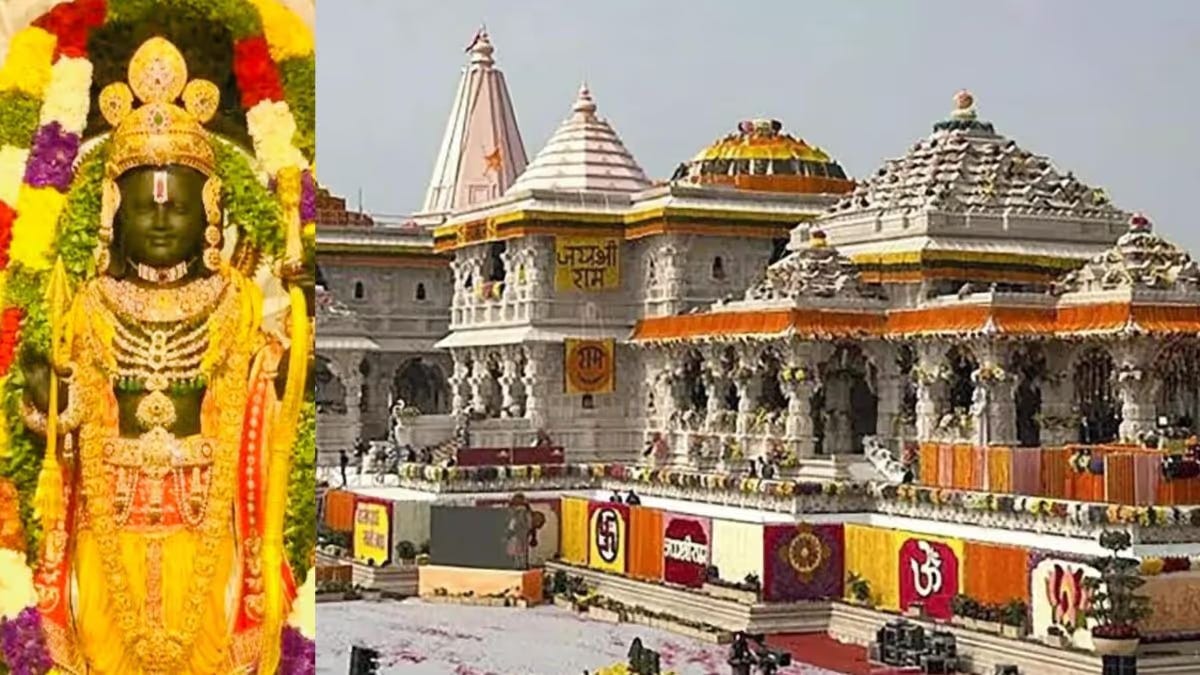As the sacred “dhwaj” (flag-hoisting) ceremony at the Shri Ram Janmabhoomi Temple in Ayodhya draws near, the temple town has transformed into a hub of devotion and celebration. With less than two weeks remaining before the momentous event, thousands of devotees from across India have begun arriving to offer prayers, seek blessings, and witness what is being described as one of the most significant spiritual occasions in recent times.
The ceremony, scheduled for November 25, will mark the official hoisting of the temple’s ceremonial flag, signifying the completion of the temple’s main structure and the beginning of a new spiritual chapter for Ayodhya. Prime Minister Narendra Modi is expected to lead the ceremony, accompanied by Chief Minister Yogi Adityanath and members of the Shri Ram Janmabhoomi Teerth Kshetra Trust.
The Atmosphere in Ayodhya
Over the past few days, the streets of Ayodhya have filled with chants of “Jai Shri Ram” as devotees, families, and children pour into the temple town. Markets are adorned with saffron flags, lights, and floral decorations. Local artisans and volunteers are working tirelessly to prepare for the grand event, while spiritual leaders and priests perform continuous rituals and recitations of the Ramayana in anticipation of the ceremony.
The Ram Janmabhoomi Teerth Kshetra Trust has taken extensive measures to ensure that every devotee visiting the temple receives proper darshan and prasad. According to trust member Anil Mishra, the dhwaj ceremony symbolizes divine completion and national pride. He emphasized that the act of seeing Lord Ram in his sanctum is itself a form of spiritual reward: “Darshan of God, and seeing Him with your own eyes, is prasad in itself. The trust ensures that every devotee who comes for prayers receives prasad and divine blessings.”
The Spiritual and Cultural Significance
The dhwaj ceremony carries deep spiritual symbolism in Hindu tradition. The hoisting of a temple flag represents the establishment of dharma, purity, and devotion. In the context of the Ram Janmabhoomi Temple, it holds even greater meaning - it marks the culmination of a centuries-long spiritual and cultural journey that began with devotion and struggle and has now blossomed into unity and celebration.
For millions of devotees, the event is not merely a ritual but a moment of national consciousness and divine reaffirmation. The flag atop the temple is viewed as a signal of victory for faith, peace, and collective perseverance. The occasion also symbolizes India’s cultural resurgence, connecting generations of devotees who have long awaited this moment.
Preparations and Security Arrangements
With an ever-increasing number of pilgrims arriving daily since Diwali, Ayodhya’s administration has intensified preparations to manage the large gatherings. According to the temple’s Superintendent of Police (Security), Balramchari Dubey, security arrangements are in full swing, and coordination among state police, temple authorities, and volunteers has been heightened to ensure smooth movement and safety.
Temporary facilities, including resting areas, food stalls, and first-aid stations, have been set up around the temple premises. Additional transport and shuttle services are being organized to assist elderly visitors and those requiring mobility support. The administration is also focused on maintaining the sanctity and cleanliness of the site throughout the event.
The Temple and Its Completion
The Shri Ram Janmabhoomi Temple, constructed under the guidance of the Teerth Kshetra Trust, stands as a magnificent structure blending traditional Indian temple architecture with modern engineering. The main sanctum housing the idol of Ram Lalla has been completed, along with six smaller shrines within the complex. The construction represents years of dedicated craftsmanship, using pink sandstone and intricate carvings that reflect the artistry of Indian heritage.
While the primary structure and rituals are now complete, work continues on ancillary facilities such as the guesthouse, museum, and auditorium. The trust has announced that these will be ready in the coming months as part of a broader plan to establish Ayodhya as a global center of pilgrimage and culture.
The Broader Significance
Beyond its religious importance, the dhwaj ceremony holds profound cultural and national relevance. It represents the unity of India’s spiritual ethos and the continuation of a tradition that links the present generation to ancient history. For Ayodhya, this event marks not just the completion of a temple but the rebirth of an identity - one rooted in devotion, peace, and inclusivity.
The city, now illuminated in festive light and energy, stands ready to welcome devotees from every corner of the country. As the date draws near, anticipation builds for the moment when the sacred flag will rise high above the temple spire, symbolizing faith fulfilled and the eternal presence of Lord Ram in the hearts of millions.


